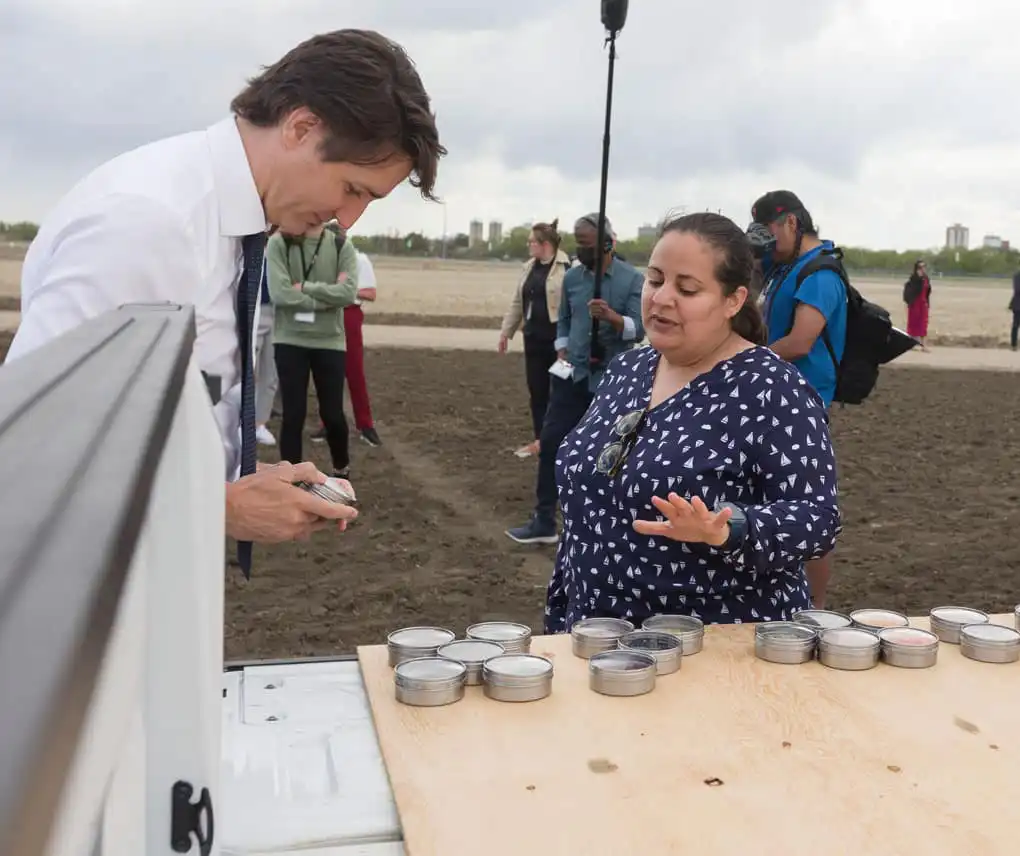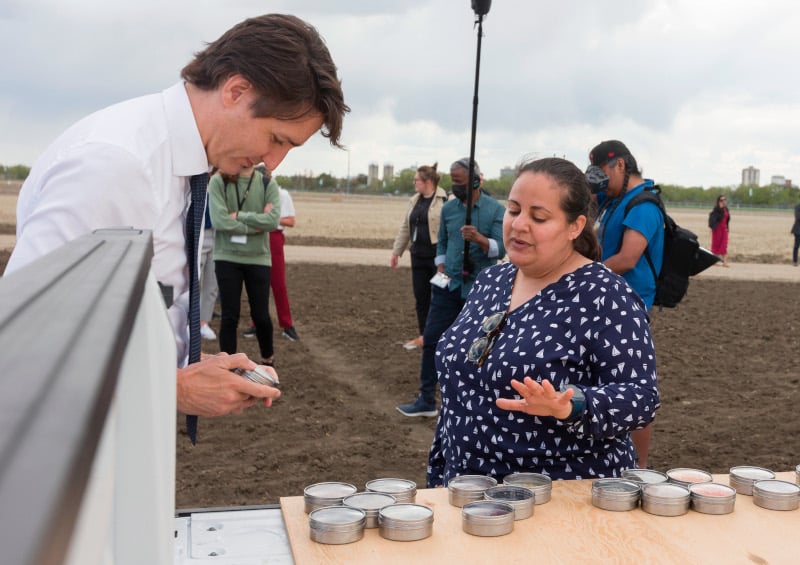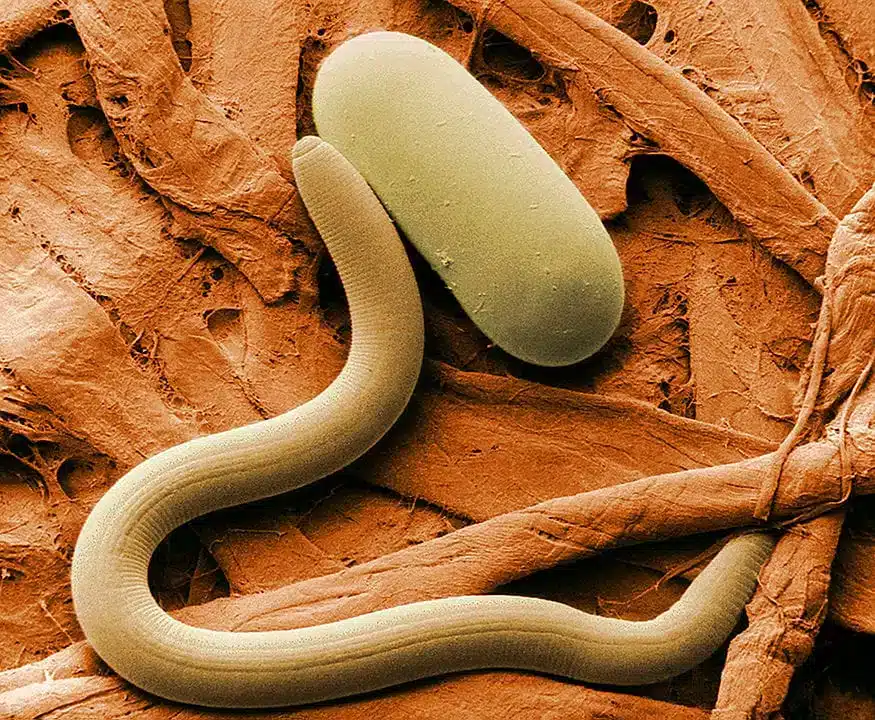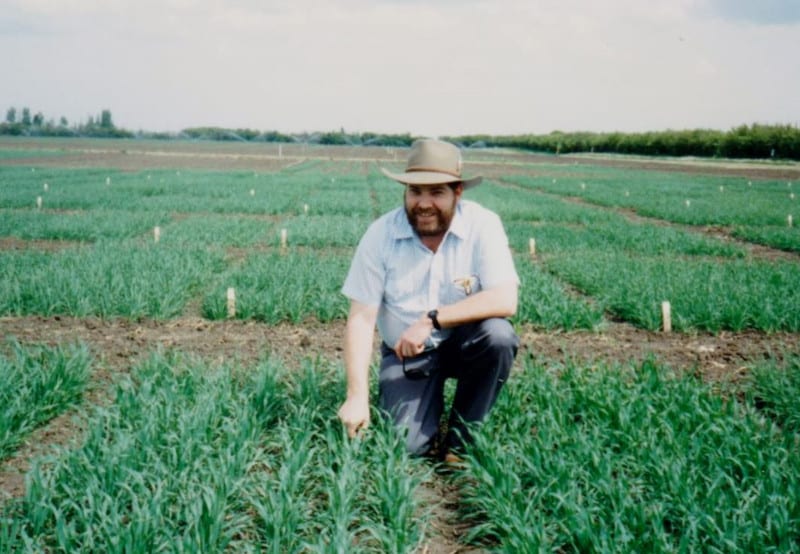Sabine Banniza’s accomplishments as a researcher are making waves as she envisions a country whose pea and lentil crops are resistant to root rot.
Sabine Banniza became a plant pathologist because she wanted to know more. More about plants, more about microscopic organisms, and just more about Mother Nature in general.
“It’s really about curiosity for me — understanding things in our lives that are a mystery. As a plant pathologist, working with microorganisms is like stepping into a completely different world,” says the pulse pathologist at the University of Saskatchewan’s Crop Development Centre (CDC) in Saskatoon.
“They’re so tiny, incredibly diverse, and there are so many of them. They change much quicker than larger organisms, and there’s a level of sophistication in these microorganisms that you wouldn’t expect unless you get to know them better.”
On the practical side, we all need to eat, and food security is crucial. Plant diseases significantly impact food production, and addressing these issues is a major driver for her, too.
That inspiration and drive is getting noticed. A project she’s spearheading at the CDC recently received more than $4.2 million from the Strategic Research Initiative (SRI) to discover and develop solutions for root rot in pea and lentil crops. It’s a project that could lead to Canada being a world leader in how to develop pulse varieties resistant to root rot.
Over the past decade, root rot has become the top production challenge for Saskatchewan pea and lentil growers, according to the Saskatchewan Pulse Growers (SPG).
It thrives in wet, warm conditions and has expanded across the province, causing up to 60–84% yield declines in peas and lentils with losses in sales and exports of up to $1.5 billion a year, SPG says.
Currently, a few specific practices or products can manage Aphanomyces, one of the most harmful pathogens in the root rot complex affecting pulses. The primary strategy for controlling it involves long-term crop rotations, avoiding peas or lentils for six to eight years or more. That’s a long time to totally stop growing a specific crop, she notes.
“This approach has led growers to either extend their crop rotations or entirely shift away from cultivating peas and lentils. It’s a huge problem that we need to find a solution to,” Banniza says.
Big Vision
Pulse pathology has become her life’s work, which for her can seem a tad surreal considering she started her career pursuing a much different path.
Banniza grew up in Germany and did her undergraduate degree in horticulture there. She also minored in tropical and subtropical agriculture because she envisioned herself doing aid work in developing countries.
After finishing her PhD in the United Kingdom, she stayed on at the University of Reading for another year but slowly realized that long-term development work might not be for her.
Through a friend of a friend, she learned about an opening for a plant pathologist at the CDC.
“I visited, and a few months later, I arrived here as a postdoc. Over four years and two rounds of applications and interviews, I secured the position I still hold today. It hasn’t been a straightforward path, but it has been quite an exciting journey with loads of experiences along the way.”
Her pathology team now consists of 10 people, including two technicians, one research officer, several graduate students and one postdoctoral fellow.
“Beyond our immediate team, we interact and collaborate with many colleagues, particularly with the crop breeders at the CDC. This larger network of collaborators enhances our ability to accomplish our research goals.”
Her team’s colleagues also include people from the National Research Council and several scientists from Agriculture and Agri-Food Canada in Saskatchewan and in Alberta.
Together, they have a big vision.
With the $4.2 million received through the SRI — it includes $2.5 million from the Sustainable Canadian Agricultural Partnership awarded through the Saskatchewan Ministry of Agriculture’s Strategic Research Program and $1.7 million from industry partners including SPG, Western Grains Research Foundation, Alberta Pulse Growers Commission, Results Driven Agriculture Research and the Manitoba Pulse and Soybean Growers — their goals include resistance breeding in pea and lentil and understanding pathogen biology to see how these organisms interact.
They’ll be investigating the best crop rotations, evaluating biocontrol and other control methods to see if they work for farmers, and looking into some very novel approaches to disease management.
They’ll even investigate innovative strategies like RNA interference alongside breeding resistant crop varieties. While new resistant varieties take time to develop, RNA interference is a novel approach for in-field disease management that could offer some solutions in the meantime.

Collaboration Critical
One of the people doing that breeding work is Ana Vargas. She’s been at the CDC in various roles for eight years now, but recently took on the role of lentil and faba bean breeder.
Collaboration is critical for a plant breeder, and stepping into her current position, she’s been fortunate to have outstanding collaborators with extensive experience in important areas for enhancing lentils and faba beans.
Banniza is a major one of those collaborators. She has also dedicated her career to studying foliar diseases in lentils, particularly anthracnose. Her work in sequencing the genome of the anthracnose fungus — a major foliar disease in lentil — has been a huge help to Vargas.
“Her work has provided important insights into the sources of resistance to this disease, which remains a significant challenge in lentil cultivation. Leveraging the resources she’s developed will be essential for our breeding program,” Vargas says.
“Sabine has been instrumental in our program by also focusing on root rot, which has emerged as a primary concern in lentil cultivation. She’s already established preliminary breeding tools, which is a fantastic starting point for our work. It’s been a privilege to step into a program with such strong collaborators and existing resources like she provides.”
Many people are familiar with plant genomes being sequenced, but far fewer fungal or pathogen genomes have been sequenced, Banniza notes. Her work on anthracnose is unique in the world, being the most detailed work in this area that she’s aware of.
“We sequenced the genome to understand how this fungus invades a plant and what it does once inside the tissue. The relationship between a pathogen and its host determines whether a disease will develop, and understanding how it develops is important to breeding for resistance,” Banniza says.
Leadership
Of course, that’s never as easy as it sounds. The biggest challenge in plant pathology is that plant diseases are not static, Banniza says.
“It’s not as simple as identifying a disease like anthracnose, breeding resistance, and considering the problem solved. In most cases, you can’t completely eradicate the pathogen, and you rarely achieve complete resistance. Over time, pathogens evolve, leading to resistance breakdown, meaning you have to start the process over again,” she says.
“Even if you manage to suppress one disease, another new disease can emerge and become significant, requiring your attention. You have to accept that you’ll never reach a point where you can say, ‘My job is done, I can retire, and nothing more will happen.’”
And that requires vision and the leadership abilities to carry it out, something Banniza has in spades. She was just named one of the most influential women in Canadian agriculture and has been selected for the W.J. White Professorship in the Department of Plant Sciences at the CDC, which she will occupy for a three-year term. She was also recognized for her outstanding contribution to the agronomy profession by the Saskatchewan Institute of Agrologists.
“As an early career scientist, I couldn’t have asked for a better guide. She’s inclusive, supportive, and always available to offer guidance as I navigate the complexities of my role,” Vargas adds.
“Sabine’s been an incredible mentor and support system.”
Reflecting on her career, Banniza says it was challenging as a female scientist in the beginning. However, it’s become easier over time with increased awareness and support for women in science.
Part of being good at what you do involves having the right mentors and being in an environment where your skills and talents are recognized and nurtured, Banniza says.
You also need to have a clear idea of your end goal, she adds.
“We are putting a lot of energy into establishing robust root rot resistance breeding programs for peas and lentils. I’m hopeful that we will release varieties with much better — though not complete — resistance in the coming years, which should significantly alleviate this problem.”












